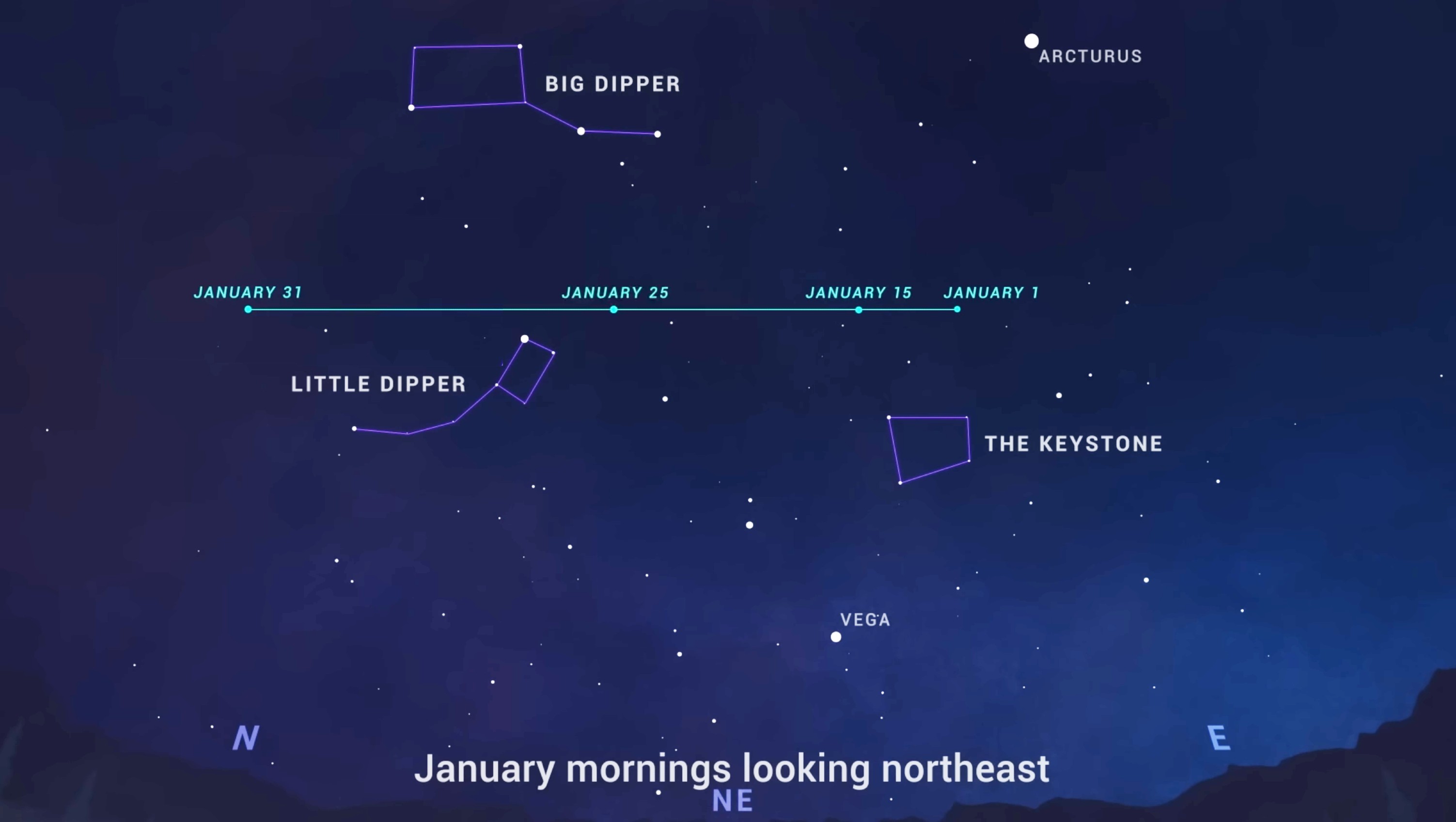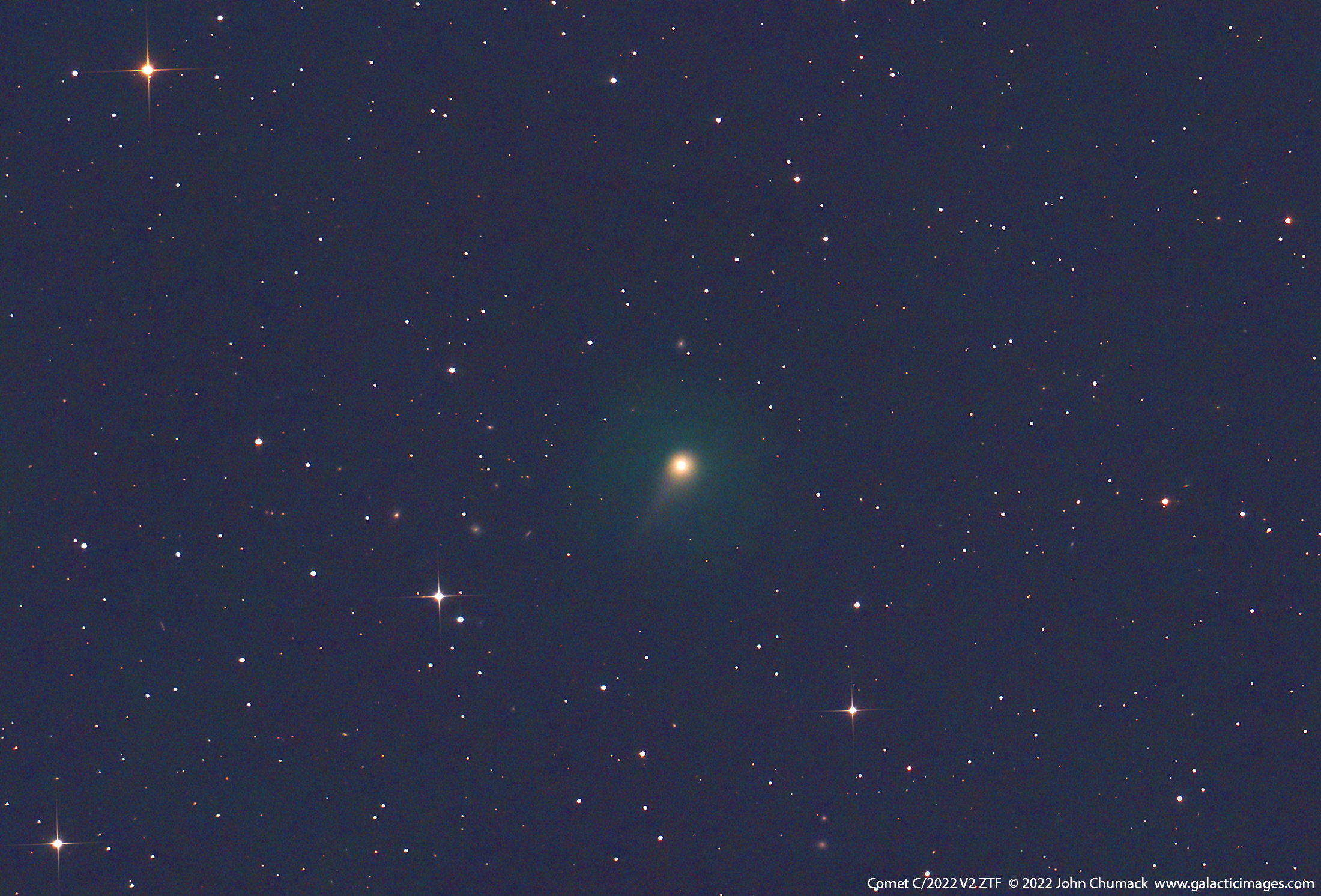Bright green comet a rare 'messenger from the outer reaches of our solar system,' astronomers say

A comet not seen from Earth in tens of thousands of years is visible in the skies this month.
Comet C/2022 E3 (ZTF) was discovered on March 2, 2022 by astronomers Frank Masci and Bryce Bolin using the Zwicky Transient Facility (ZTF) at the Palomar Observatory in California. At the time, the comet was just inside the orbit of Jupiter some 399 million miles (643 million km) from the sun. Fast forward to today, and the comet has already made its closest approach to the sun and in a few weeks will make its closest approach to the Earth on Feb. 1.
Zwicky Transient Facility (ZTF) co-principal investigator Tom Prince and University of Maryland's Michael Kelley, the facility's comet expert, told Space.com that the comet was an exciting discovery even for astronomers who spend their careers hunting for such objects. "Having discovered the object initially, we were very excited to see that it was, indeed, a comet and that it was likely to be seen as a naked-eye object as it came nearer to the Earth," Prince said. "The solar system is a fascinating place and is so much more than just the sun and the planets."
Related: Amazing photos of gorgeously green Comet C/2022 E3 (ZTF)

Looking for a telescope to see comet C/2022 E3 ZTF? We recommend the Celestron Astro Fi 102 as the top pick in our best beginner's telescope guide.
When the comet was initially discovered, astronomers weren't sure about its identity, Prince told Space.com in an interview.
"When we first discovered the object, we did not know whether it was an asteroid or a comet, Prince said. "As its orbit was better defined, the likelihood that it was a 'long period' comet increased and evidence of a tail started to be seen."
"The discovery was made by looking for objects undergoing motion in five images taken about three-and-a-half minutes apart," Prince said. "In each successive image, the object moved slightly relative to the background stars. Sear software written by Frank Masci of Caltech was used to find moving objects in ZTF data. Bryce Bolin used the software while he was at Caltech and reported the moving object to the Minor Planet Center."
Breaking space news, the latest updates on rocket launches, skywatching events and more!
Ultimately, it was the orbit of comet C/2022 E3 (ZTF) that allowed researchers to conclusively identify it as a comet. "At the time it was reported, March 2, 2022, it was not known that the object was a comet, only that it was a moving object in the solar system," Prince said. "After the object was reported to the Minor Planet Center, many other observatories made measurements allowing the orbit of the object to be better defined, and showing that it was coming in from the outer solar system." Prince added that the large field of view the Zwicky Transient Facility has allows it to survey the entire visible sky every two nights, making it well-suited for NASA-funded searches for comets and asteroids.
Kelley added that the orbit of C/2022 E3 (ZTF) offers some clues to its origins. "The orbit indicates it comes from the edge of our solar system, a distant reservoir of comets we call the Oort cloud," Kelley told Space.com. "The Oort cloud is big. So large that it surrounds all the other objects in our solar system (planets, asteroids, etc.), and is likely about a light-year across."
Read more: Oort Cloud: The Outer Solar System's Icy Shell
While the Zwicky Transient Facility discovers a few comets each year, Kelley said the discovery of a bright comet that can be seen with the naked eye is always exciting. "Finding bright comets like ZTF is special to cometary astronomers. Bright comets give us the best opportunities to determine how comets formed and how they have changed since then."
Both researchers told Space.com that they look forward to seeing the public's reaction to this rare comet and the photos from amateur astronomers it will produce. "Enjoy them and try to see it with a telescope or binoculars if possible," Kelley said. "It may not look as good as the photos, but seeing it with your own eyes is a unique experience."
"Comets such as this are messengers from the outermost reaches of our solar system, taking tens of thousands of years to make their way into our vicinity," Prince added. "We hope that the public will be as excited as we are about the visit of this comet to the inner solar system."
Hoping to observe C/2022 E3 (ZTF)? Our guides on the best telescopes and best binoculars can help. You can also check out our guides on how to photograph the moon, as well our best cameras for astrophotography and best lenses for astrophotography to get started.
Editor's Note: If you snap the comet C/2022 E3 (ZTF), and would like to share it with Space.com’s readers, send your photo(s), comments, and your name and location to spacephotos@space.com.
Follow Brett on Twitter at @bretttingley. Follow us on Twitter @Spacedotcom or on Facebook.

Brett is curious about emerging aerospace technologies, alternative launch concepts, military space developments and uncrewed aircraft systems. Brett's work has appeared on Scientific American, The War Zone, Popular Science, the History Channel, Science Discovery and more. Brett has English degrees from Clemson University and the University of North Carolina at Charlotte. In his free time, Brett enjoys skywatching throughout the dark skies of the Appalachian mountains.


